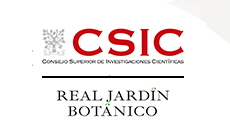Scientific Area
Diversification history of Pedicularis (Orobanchaceae) in the Himalaya-Hengduan Mountains Region
ID: 613 / 343
Category: Abstract
Track: Pending
Proposed Symposium Title: Diversification history of Pedicularis (Orobanchaceae) in the Himalaya-Hengduan Mountains Region
Authors:
Rong Liu1,2, Wen-Bin Yu3,4, Hong Wang1,2, De-Zhu Li 2,1
Affiliations: 1 Key Laboratory for Plant Diversity and Biogeography of East Asia, Kunming Institute of Botany, Chinese Academy of Sciences, Kunming, Yunnan 650201, China 2 Plant Germplasm and Genomics Centre, Germplasm Bank of Wild Species, Kunming Institute of Botany, Chinese Academy of Sciences, Kunming, Yunnan 650201, China 3 Center for Integrative Conservation, Xishuangbanna Tropical Botanical Garden, Chinese Academy of Sciences, Mengla, Yunnan 666303, China 4 Center of Conservation Biology, Core Botanical Gardens, Chinese Academy of Sciences, Mengla, Yunnan 666303, China
Abstract:
The c. 270 species of Pedicularis endemic to the Himalaya-Hengduan Mountains (HHM) region exhibits considerable diversity in geographic distribution, elevational range, and floral morphology. Many of the species, including those with the longest corolla tubes and beaked galeas, fall within a single clade, implying putative in situ radiations. We conduct phylogenetic analyses of a clade (informally named “Clade 3” in our previous work) concentrated in the HHM to infer drivers of diversification and the biogeographic history. Integrating plastome phylogeny, environment data and species distribution data, we revealed the species diversity pattern and identified the key environmental factors of Pedicualris Clade 3. Subsequently, we estimated the macroevolutionary rate and reconstructed ancestral distribution and corolla traits. Meanwhile, we evaluated the correlation between distribution overlap and phylogenetic distance. Our results suggest that Northwestern Yunnan–Kangding within the HHM region is the center of species diversity of Pedicularis Clade 3 and this pattern is constrained by precipitation and multiple environmental factors; Parallel range expansion from the Sanjiang valley and subsequent allopatric speciation across the HHM are the dominant process in early rapid diversification and may be a major contributor to the high species accumulation of Pedicularis spp. Additionally, the evolution of corolla is not associated with the speciation, but as a response of species richness. Our study highlights the importance of integrated evidence for understanding species diversification pattern, and this pattern may be applicable to explain the diversity of other hyper-diverse alpine genera in the HHM region.




